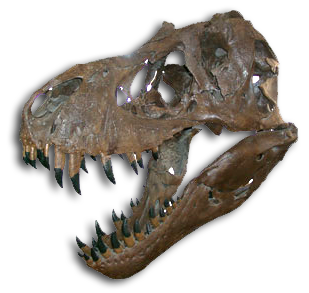Item Number
1251
Type
image
Description
Douglas Fir
Size
10x10
Age
Cenozoic, middle Miocene, ~14 million years
Status
in inventory
Display/Storage
Display
Building
Zuhl Museum
Original Site
Kittitas Co., near Vantage, Washington
Date Acquired
1986
Source
Rose
Gallery/Room\Floor
Petrified Wood Gallery
Notes
Notes from Dr. Scott Singleton, Houston Museum: Douglas Fir (exact species not known) Genus: Pseudotsuga Family: Pinaceae (Pine) Formation: Yakima Basalt Fm. Distinguishing Characteristics: Pronounced growth rings resulting from seasonal temperature variations in a temperate environment. Resin canals are present in the latewood or on the growth ring boundary. These resin canals are sometimes clustered into chains of two to several. Douglas Fir and Spruce are often confused because in cross-section they look very similar. The primary difference is that the change in cell size from earlywood to latewood is gradual in Spruce and more pronounced in Douglas Fir. Environment of Deposition: Original deposition was either as rafted material in rivers or as in-situ material in swamps. These environments were repeatedly covered by basalt flows from Cascade volcanoes. When entombed by molten material, the trees burned unless they were covered by water in a stream, lake, or swamp. Preserved trees are found both as rooted stumps standing upright and as unrooted and stripped logs lying horizontal. Because of this mode of preservation, the Vantage Fossil Forests are known to contain a wide diversity of tree genera. It has been estimated that over 50 genera are represented, although about 15 genera account for about 90% of the specimens.
Preview

Description
Notes from Dr. Scott Singleton, Houston Museum: Douglas Fir (exact species not known) Genus: Pseudotsuga Family: Pinaceae (Pine) Formation: Yakima Basalt Fm. Distinguishing Characteristics: Pronounced growth rings resulting from seasonal temperature variations in a temperate environment. Resin canals are present in the latewood or on the growth ring boundary. These resin canals are sometimes clustered into chains of two to several. Douglas Fir and Spruce are often confused because in cross-section they look very similar. The primary difference is that the change in cell size from earlywood to latewood is gradual in Spruce and more pronounced in Douglas Fir. Environment of Deposition: Original deposition was either as rafted material in rivers or as in-situ material in swamps. These environments were repeatedly covered by basalt flows from Cascade volcanoes. When entombed by molten material, the trees burned unless they were covered by water in a stream, lake, or swamp. Preserved trees are found both as rooted stumps standing upright and as unrooted and stripped logs lying horizontal. Because of this mode of preservation, the Vantage Fossil Forests are known to contain a wide diversity of tree genera. It has been estimated that over 50 genera are represented, although about 15 genera account for about 90% of the specimens. 12x11
Keywords
Douglas Fir Notes from Dr. Scott Singleton, Houston Museum: Douglas Fir (exact species not known) Genus: Pseudotsuga Family: Pinaceae (Pine) Formation: Yakima Basalt Fm. Distinguishing Characteristics: Pronounced growth rings resulting from seasonal temperature variations in a temperate environment. Resin canals are present in the latewood or on the growth ring boundary. These resin canals are sometimes clustered into chains of two to several. Douglas Fir and Spruce are often confused because in cross-section they look very similar. The primary difference is that the change in cell size from earlywood to latewood is gradual in Spruce and more pronounced in Douglas Fir. Environment of Deposition: Original deposition was either as rafted material in rivers or as in-situ material in swamps. These environments were repeatedly covered by basalt flows from Cascade volcanoes. When entombed by molten material, the trees burned unless they were covered by water in a stream, lake, or swamp. Preserved trees are found both as rooted stumps standing upright and as unrooted and stripped logs lying horizontal. Because of this mode of preservation, the Vantage Fossil Forests are known to contain a wide diversity of tree genera. It has been estimated that over 50 genera are represented, although about 15 genera account for about 90% of the specimens. 1986 Cenozoic, middle Miocene, ~14 million years Small Slab
Keywords
Douglas Fir Notes from Dr. Scott Singleton, Houston Museum: Douglas Fir (exact species not known) Genus: Pseudotsuga Family: Pinaceae (Pine) Formation: Yakima Basalt Fm. Distinguishing Characteristics: Pronounced growth rings resulting from seasonal temperature variations in a temperate environment. Resin canals are present in the latewood or on the growth ring boundary. These resin canals are sometimes clustered into chains of two to several. Douglas Fir and Spruce are often confused because in cross-section they look very similar. The primary difference is that the change in cell size from earlywood to latewood is gradual in Spruce and more pronounced in Douglas Fir. Environment of Deposition: Original deposition was either as rafted material in rivers or as in-situ material in swamps. These environments were repeatedly covered by basalt flows from Cascade volcanoes. When entombed by molten material, the trees burned unless they were covered by water in a stream, lake, or swamp. Preserved trees are found both as rooted stumps standing upright and as unrooted and stripped logs lying horizontal. Because of this mode of preservation, the Vantage Fossil Forests are known to contain a wide diversity of tree genera. It has been estimated that over 50 genera are represented, although about 15 genera account for about 90% of the specimens. 1986 Cenozoic, middle Miocene, ~14 million years Small Slab


